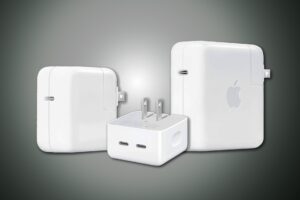Looking to keep your vehicle’s battery charged and ready to go? Wondering how does a trickle charger work? Well, you’ve come to the right place! In this article, we’ll delve into the inner workings of a trickle charger and explore how it can effectively maintain your battery’s charge. No need for any complicated jargon or technicalities, we’ll break it down in a simple and conversational manner. So, let’s dive right in and uncover the secrets behind this handy device!
How Does a Trickle Charger Work?
A trickle charger, also known as a maintenance charger or float charger, is a device used to keep batteries charged at an optimal level over an extended period. It provides a low and constant stream of current to the battery, compensating for any self-discharge that may occur. This article will delve into the inner workings of trickle chargers and explore how they efficiently maintain battery health.
The Purpose of a Trickle Charger
Trickle chargers are primarily designed to keep batteries fully charged when they are not in use or when the charging process is complete. Batteries in vehicles like cars, motorcycles, boats, or RVs can often drain slowly even when the engine is off. This gradual discharge, known as self-discharge, can lead to sulfation—a buildup of lead sulfate crystals on the battery plates. If left unaddressed, sulfation can significantly reduce the battery’s capacity and lifespan.
A trickle charger mitigates sulfation and prevents self-discharge by supplying a continuous low-level charge to the battery. This enables the battery to maintain a full charge and ensures it is ready for use whenever needed.
Understanding Battery Charging
Before we dive into the specifics of how a trickle charger works, it’s essential to understand some basic concepts about battery charging. Battery charging typically involves two stages: bulk charging and float charging.
During the bulk charging stage, a higher voltage is applied to the battery, rapidly replenishing its charge until it reaches around 80-90% capacity. Once this level is achieved, the charger automatically switches to the float charging stage.
Float charging, also known as maintenance charging or trickle charging, involves providing a low and constant voltage to the battery. This stage compensates for any self-discharge that may occur and keeps the battery at its optimal level without overcharging it.
Components of a Trickle Charger
To understand how a trickle charger works, let’s take a closer look at its key components:
Transformers
Trickle chargers use transformers to convert the high voltage from the power outlet into a lower, safer voltage suitable for charging the battery. Transformers consist of primary and secondary windings, and their ratio of turns determines the voltage conversion.
Rectifiers
Rectifiers are crucial components in trickle chargers. They convert alternating current (AC) from the power outlet into direct current (DC) required for charging the battery. Common types of rectifiers used in trickle chargers include diodes and thyristors.
Control Circuitry
Trickle chargers incorporate control circuitry to monitor and regulate the charging process. These circuits ensure that the battery receives a consistent, low-level charge and prevent overcharging or undercharging.
Voltage Regulator
The voltage regulator is responsible for maintaining a steady voltage output from the charger to the battery. It ensures that the voltage remains within the safe range and prevents any potential damage to the battery.
Indicator Lights
Many trickle chargers come equipped with indicator lights to provide feedback on the charging status. These lights indicate when the charger is connected, whether the battery is charging or fully charged, and if any issues are present.
The Working Mechanism of a Trickle Charger
Now that we have a basic understanding of the components let’s explore how a trickle charger works:
1. After connecting the trickle charger to a power outlet, the transformer steps down the voltage and supplies it to the rectifier.
2. The rectifier converts the AC power from the transformer into DC power, which is suitable for charging the battery.
3. The control circuitry continuously monitors the charging process. It ensures that the voltage output remains within the optimal range and adjusts it as needed.
4. The voltage regulator maintains a steady voltage output to prevent overcharging or undercharging. It ensures that the battery receives a consistent low-level charge, compensating for any self-discharge.
5. The trickle charger supplies a constant stream of current to the battery, topping it up and countering any discharge. This process helps prevent sulfation and keeps the battery at its optimal level.
6. Indicator lights on the charger provide visual feedback on the charging status, allowing users to monitor the process easily.
Benefits of Trickle Chargers
Trickle chargers offer several benefits for battery maintenance and longevity:
- Longer Battery Life: Trickle chargers prevent sulfation and maintain the battery’s optimal charge, significantly extending its lifespan.
- Convenience: With a trickle charger, you can leave your battery connected for an extended period without worrying about overcharging or self-discharge.
- Readiness: By keeping the battery charged, a trickle charger ensures that your vehicle or equipment is always ready for use, especially after long periods of inactivity.
- Cold Weather Protection: Trickle chargers help combat the effects of self-discharge, which can be more pronounced in cold weather conditions.
- Cost Savings: Maintaining batteries in optimal condition through trickle charging can save you money in the long run by avoiding premature battery replacement.
Trickle chargers are valuable devices for maintaining battery health, particularly during periods of inactivity. By providing a constant, low-level charge, trickle chargers prevent sulfation and keep your batteries ready for use. Understanding how these devices work and their components can help you make informed decisions regarding battery maintenance. Remember, a well-maintained battery means fewer unexpected power issues and a longer lifespan for your valuable equipment.
Frequently Asked Questions
How does a trickle charger work?
A trickle charger works by providing a low, steady flow of electricity to recharge a battery gradually. It is designed to maintain the charge level of a battery over an extended period of time, without overcharging or damaging the battery.
Why would you use a trickle charger?
A trickle charger is commonly used when a vehicle or equipment will be inactive for an extended period, such as during storage or winter months. It helps prevent the battery from losing its charge and ensures that it is ready to use when needed.
How does a trickle charger prevent overcharging?
Trickle chargers typically have built-in features that prevent overcharging. They regulate the flow of electricity to the battery, automatically adjusting the charging rate based on the battery’s needs. This helps maintain a safe and optimal charge level without overloading the battery.
Can a trickle charger damage the battery?
If used correctly, a trickle charger should not damage the battery. However, it is important to choose a charger specifically designed for trickle charging and follow the manufacturer’s instructions. Using an incompatible or incorrect charger could potentially harm the battery.
How long does it take for a trickle charger to fully charge a battery?
The time it takes for a trickle charger to fully charge a battery depends on various factors, such as the battery’s capacity, current charge level, and the charger’s output. Trickle charging is a slow process, and it may take several hours to several days to fully charge a battery.
Can I leave a trickle charger connected to a battery indefinitely?
Yes, you can leave a trickle charger connected to a battery for an extended period. Trickle chargers are designed to be left connected without causing harm to the battery. However, it is essential to monitor the charging process and ensure the charger is functioning properly.
Final Thoughts
A trickle charger is a device that slowly charges a battery over an extended period of time. It works by supplying a low level of constant current to the battery, preventing it from overcharging while keeping it at a fully charged state. This helps to maintain the battery’s capacity and prolong its lifespan. Trickle chargers typically have a built-in mechanism to monitor the battery voltage and adjust the charging current accordingly. By providing a continuous and gentle charge, trickle chargers ensure that your battery remains ready for use whenever you need it. So, how does a trickle charger work? It works by delivering a consistent low level of current to your battery over time, keeping it fully charged and in optimal condition.



